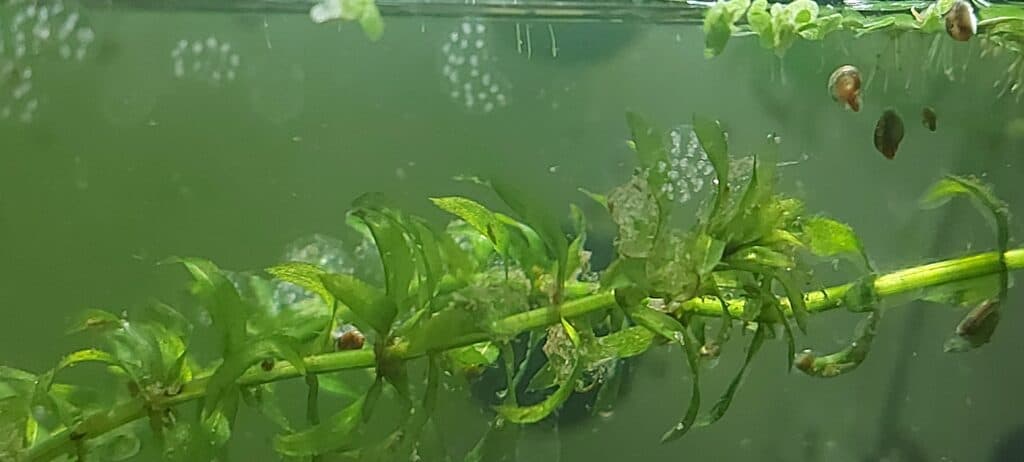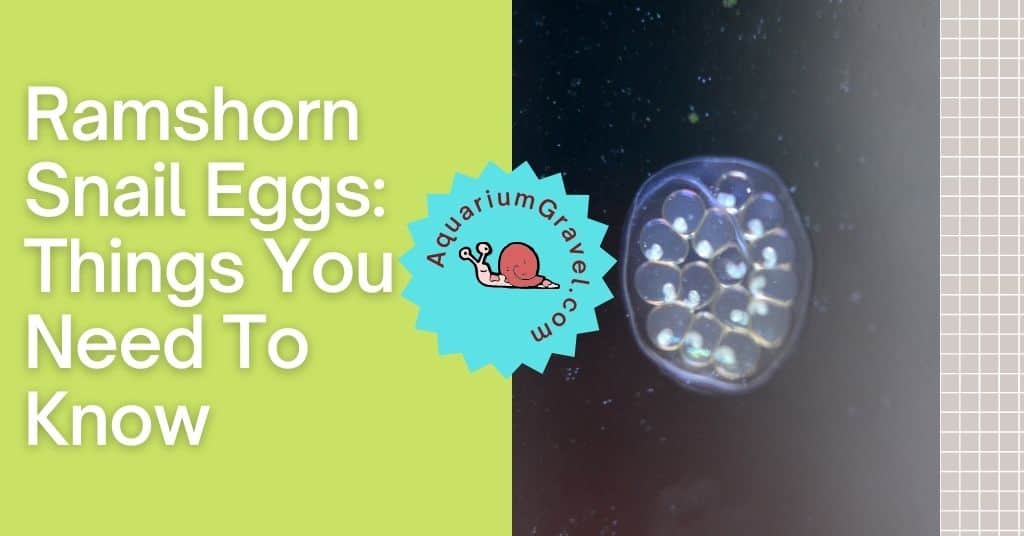Last Updated on December 4, 2021 by cmoarz
Ramshorn snails are a type of freshwater snail that lays eggs in clusters. These eggs have a slimy coating and can be either white or light yellow depending on the species, but they all look alike.
Ramhorns are most often brought up as feeder snail for other fish and snails (such as the assassin snail).
They make a good addition to tanks because of their speed in which they clean up algae and other debris, However, they breed very rapidly and many people may consider them a pest.
So, no matter what reason you have for keeping ramshorn snails, you may have to deal with the eggs. You will need to know how they look and what conditions are needed for them to hatch into baby ramshorns.
What do ramshorn snail eggs look like?
Table of Contents
Check out our identification guide What does snail eggs look like To help identify more snail eggs
The first thing that you should know about these eggs is their appearance. They come in a cluster of usually 12-20-30 (although this number can vary).
They are a light yellowish-brown color and they are roughly the size of your fingernail.
Usually, they are stuck to the side of the enclosure/tank/aquarium, but you may also find them on logs, decorations, and plants.

How to tell if ramshorn snail eggs are fertile.
One thing you should know is a ramshorn snail is capable of laying unfertilized eggs. Although as a hermaphrodite, ramshorns can reproduce with any other snail of the same species and can retain genetic material from another snail for up to a year! They still can produce and do produce, a lot of unfertilized eggs. Why? Duno. But they certainly do!
The best way to know whether or not these particular eggs have any chance of becoming baby snails is by checking for bubbles (which indicates that an embryo is developing).
If you look close enough you can also see a tiny snail starting to develop after about 1 week. That’s a sure-fire way to know they are fertile.
Since the eggs are nearly transparent, it’s super easy to see inside with the naked eye.
I do recommend some sort of magnification though because of the amazing sight of seeing such a tiny baby snail up close and developing!
However, if no little dot/baby snail is present, that means that the eggs are infertile. Eventually, you will can do away with them.
Don’t damage the fertile eggs though if you want them to hatch! Best leave it alone until they all finish hatching.
Unlike a lot of aquatic eggs, These eggs usually don’t suffer from fungal outbreaks or anything that needs micro managing.
Removing ramshorns and dwarf ramshorn snail eggs
If they came over on some plants you recently purchased and you are not willing for an outbreak to occur, You can get rid of the egg sacks as you see them.
First, remove all the ramshorns snails so they don’t lay more eggs.
Scrape the eggs off the glass with a razor blade and freeze them in a paper towel before disposal.
For dwarf eggs that kind of float in a cloud more so than the larger variety, They may be a hindrance to removing with a razor blade.
You will need to remove your plants and inspect each one closly. It’s easier to do this in a clear glass jar by dipping the plants into water.
The eggs will float up a bit and be easy to spot, otherwise, they are too transparent when out of the water to see well.
Remove them the best you can. Snipping leaves might be required, or consider replacing the entire plant.
Duckweed will need to be disposed of entirely. You can inspect several pieces and put them to the side to grow out a new batch if you don’t want to buy more.
Egg sacks stick to the tiny duckweed roots like nothing else and you simply won’t be able to clean them off without the use of chemicals.
How long does it take for ramshorn snail eggs to hatch?
The eggs will hatch in about 2-3+ weeks. They’ll start off life as tiny little snails that are virtually transparent. As they age, they will become less so as they continue to grow.
About
Owner of AquariumGravel.com and also owner of actual Aquarium Gravel believe it or not! ;). Setting up beautiful aquarium sceneries and habitats since I was very young. Enjoy!
- Web |
- More Posts(290)

